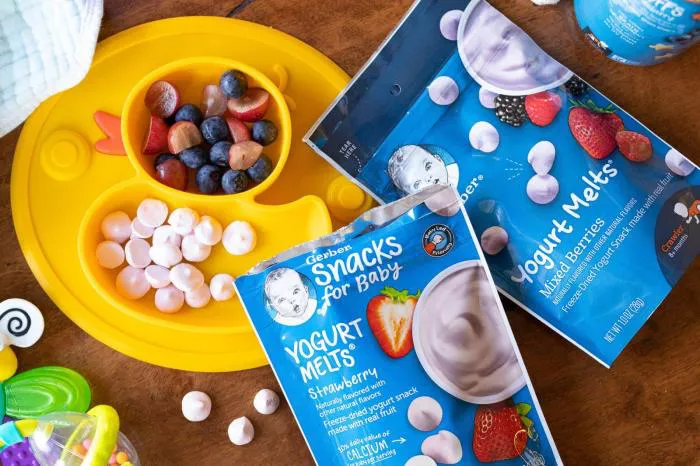Gerber snacks are popular among parents. They are often used as a convenient option for feeding infants and toddlers. However, many parents wonder if Gerber snacks are safe for infants. In this article, we will delve into the safety of Gerber snacks. We will explore their ingredients, nutritional value, and potential concerns. This information will help parents make informed choices for their children.
Understanding Gerber Snacks
Gerber offers a range of snacks designed for infants and toddlers. These snacks include puffs, teething biscuits, and yogurt melts. Each product aims to provide a tasty option for young children. They are also marketed as easy to eat and digest.
Gerber snacks are often fortified with vitamins and minerals. This fortification aims to support a child’s growth and development. Parents appreciate this aspect. However, it raises questions about the overall healthiness of the snacks.
Ingredients in Gerber Snacks
The ingredients in Gerber snacks vary by product. Most snacks contain grains, fruits, and vegetables. Common ingredients include rice flour, corn starch, and fruit puree. These ingredients are generally considered safe for young children.
However, some parents may have concerns about additives. Certain snacks contain preservatives and artificial flavors. These additives can raise alarms for health-conscious parents. It is essential to read the labels carefully. This ensures that parents are aware of what they are feeding their children.
Nutritional Value
Gerber snacks are designed to provide nutrition. Many snacks are low in sugar and contain essential vitamins. For example, some snacks are fortified with iron and vitamin D. These nutrients are crucial for a child’s development.
However, it is vital to remember that snacks should not replace meals. Gerber snacks can be a part of a balanced diet. But they should not be the primary source of nutrition. Parents should aim to offer a variety of foods. This includes fruits, vegetables, proteins, and whole grains.
Potential Concerns
While Gerber snacks are generally safe, there are potential concerns. One significant concern is choking hazards. Some snacks, especially puffs and biscuits, can be small and hard. Parents should always supervise their children while eating. This is crucial for preventing choking incidents.
Another concern is allergies. Some children may be allergic to certain ingredients. Common allergens include wheat, dairy, and soy. Parents should check for any allergens before introducing new snacks. It is also wise to consult with a pediatrician if there are concerns.
Recommendations for Parents
Parents should take a cautious approach when introducing Gerber snacks. Here are some recommendations:
Start Slow: Introduce new snacks one at a time. This helps identify any allergies or sensitivities.
Read Labels: Always check the ingredient list. Look for any potential allergens or additives that may be concerning.
Supervise Eating: Always watch your child while they eat snacks. This helps prevent choking and ensures they are safe.
Balance Snacks with Meals: Use snacks as a complement to meals, not a replacement. Offer a variety of foods to ensure balanced nutrition.
Consult Your Pediatrician: If in doubt, speak with your child’s pediatrician. They can provide tailored advice based on your child’s needs.
Conclusion
In conclusion, Gerber snacks can be a safe option for infants and toddlers. They offer convenience and are designed with children’s nutrition in mind. However, parents should remain vigilant. Understanding the ingredients, nutritional value, and potential concerns is essential.
By taking a cautious approach and being informed, parents can safely incorporate Gerber snacks into their child’s diet. Always prioritize variety and balance. With the right choices, parents can help their children develop healthy eating habits from an early age.
Related topics:


